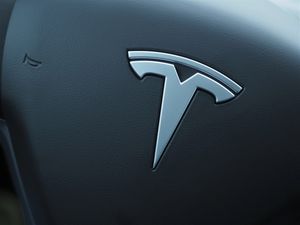
The global semiconductor etch equipment market is on the cusp of a significant boom, projected to witness robust growth from 2025 to 2032. This critical segment of the semiconductor industry, essential for crafting the intricate architectures of modern microchips, is being propelled by an insatiable demand for advanced computing power, particularly from the burgeoning fields of Artificial Intelligence (AI) and the Internet of Things (IoT). With market valuations already in the tens of billions, industry analysts anticipate a substantial Compound Annual Growth Rate (CAGR) over the next seven years, underscoring its pivotal role in the future of technology.
This forward-looking outlook highlights a market not just expanding in size but also evolving in complexity and technological sophistication. As the world races towards ever-smaller, more powerful, and energy-efficient electronic devices, the precision and innovation offered by etch equipment manufacturers become paramount. This forecasted growth trajectory is a clear indicator of the foundational importance of semiconductor manufacturing capabilities in enabling the next generation of technological breakthroughs across diverse sectors.
The Microscopic Battlefield: Advanced Etching Techniques Drive Miniaturization
The heart of the semiconductor etch equipment market's expansion lies in continuous technological advancements, particularly in achieving unprecedented levels of precision and control at the atomic scale. The industry's relentless march towards advanced nodes, pushing beyond 7nm and even reaching 3nm, necessitates highly sophisticated etching processes to define circuit patterns with extreme accuracy without damaging delicate structures. This includes the intricate patterning of conductor materials and the development of advanced dielectric etching technologies.
A significant trend driving this evolution is the increasing adoption of 3D structures and advanced packaging technologies. Innovations like FinFET transistors, 3D NAND flash memory, and 2.5D/3D packaging solutions, along with fan-out wafer-level packaging (FOWLP) and system-in-package (SiP) solutions, demand etching capabilities far beyond traditional planar processes. Equipment must now create complex features such as through-silicon vias (TSVs) and microbumps, requiring precise control over etch depth, profile, and selectivity across multiple layers and materials. Dry etching, in particular, has emerged as the dominant technology, lauded for its superior precision, anisotropic etching capabilities, and compatibility with advanced manufacturing nodes, setting it apart from less precise wet etching methods. Initial reactions from the AI research community and industry experts emphasize that these advancements are not merely incremental; they are foundational for achieving the computational density and efficiency required for truly powerful AI models and complex data processing.
Corporate Titans and Nimble Innovators: Navigating the Competitive Landscape
The robust growth in the semiconductor etch equipment market presents significant opportunities for established industry giants and emerging innovators alike. Companies such as Applied Materials Inc. (NASDAQ: AMAT), Tokyo Electron Limited (TYO: 8035), and Lam Research Corporation (NASDAQ: LRCX) are poised to be major beneficiaries, given their extensive R&D investments and broad portfolios of advanced etching solutions. These market leaders are continuously pushing the boundaries of plasma etching, dry etching, and chemical etching techniques, ensuring they meet the stringent requirements of next-generation chip fabrication.
The competitive landscape is characterized by intense innovation, with players like Hitachi High-Technologies Corporation (TYO: 6501), ASML (NASDAQ: ASML), and KLA Corporation (NASDAQ: KLAC) also holding significant positions. Their strategic focus on automation, advanced process control, and integrating AI into their equipment for enhanced efficiency and yield optimization will be crucial for maintaining market share. This development has profound competitive implications, as companies that can deliver the most precise, high-throughput, and cost-effective etching solutions will gain a substantial strategic advantage. For smaller startups, specialized niches in emerging technologies, such as etching for quantum computing or neuromorphic chips, could offer avenues for disruption, challenging the dominance of larger players by providing highly specialized tools.
A Cornerstone of the AI Revolution: Broader Implications
The surging demand for semiconductor etch equipment is intrinsically linked to the broader AI landscape and the relentless pursuit of more powerful computing. As AI models grow in complexity and data processing requirements, the need for high-performance, energy-efficient chips becomes paramount. Etch equipment is the unsung hero in this narrative, enabling the creation of the very processors that power AI algorithms, from data centers to edge devices. This market's expansion directly reflects the global investment in AI infrastructure and the acceleration of digital transformation across industries.
The impacts extend beyond just AI. The proliferation of 5G technology, the Internet of Things (IoT), and massive data centers all rely on state-of-the-art semiconductors, which in turn depend on advanced etching. Geopolitical factors, particularly the drive for national self-reliance in chip manufacturing, are also significant drivers, with countries like China investing heavily in domestic foundry capacity. Potential concerns, however, include the immense capital expenditure required for R&D and manufacturing, the complexity of supply chains, and the environmental footprint of semiconductor fabrication. This current growth phase can be compared to previous AI milestones, where breakthroughs in algorithms were often bottlenecked by hardware limitations; today's advancements in etch technology are actively removing those bottlenecks, paving the way for the next wave of AI innovation.
The Road Ahead: Innovations and Uncharted Territories
Looking to the future, the semiconductor etch equipment market is expected to witness continued innovation, particularly in areas like atomic layer etching (ALE) and directed self-assembly (DSA) techniques, which promise even greater precision and control at the atomic level. These advancements will be critical for the commercialization of emerging technologies such as quantum computing, where qubits require exquisitely precise fabrication, and neuromorphic computing, which mimics the human brain's architecture. The integration of machine learning and AI directly into etch equipment for predictive maintenance, real-time process optimization, and adaptive control will also become standard, further enhancing efficiency and reducing defects.
However, significant challenges remain. The development of new materials for advanced chips will necessitate novel etching chemistries and processes, pushing the boundaries of current material science. Furthermore, ensuring the scalability and cost-effectiveness of these highly advanced techniques will be crucial for widespread adoption. Experts predict a future where etch equipment is not just a tool but an intelligent system, capable of autonomously adapting to complex manufacturing requirements and integrating seamlessly into fully automated foundries. What experts predict will happen next is a continued convergence of hardware and software innovation, where the physical capabilities of etch equipment are increasingly augmented by intelligent control systems.
Etching the Future: A Foundational Pillar of Tomorrow's Tech
In summary, the semiconductor etch equipment market is a foundational pillar of the modern technological landscape, currently experiencing a surge fueled by the exponential growth of AI, 5G, IoT, and advanced computing. With market valuations expected to reach between USD 28.26 billion and USD 49.27 billion by 2032, driven by a robust CAGR, this sector is not merely growing; it is undergoing a profound transformation. Key takeaways include the critical role of advanced dry etching techniques, the imperative for ultra-high precision in manufacturing sub-7nm nodes and 3D structures, and the significant investments by leading companies to meet escalating demand.
This development's significance in AI history cannot be overstated. Without the ability to precisely craft the intricate circuits of modern processors, the ambitious goals of AI – from autonomous vehicles to personalized medicine – would remain out of reach. The coming weeks and months will be crucial for observing how major players continue to innovate in etching technologies, how new materials challenge existing processes, and how geopolitical influences further shape investment and manufacturing strategies in this indispensable market. The silent work of etch equipment is, quite literally, etching the future of technology.
This content is intended for informational purposes only and represents analysis of current AI developments.
TokenRing AI delivers enterprise-grade solutions for multi-agent AI workflow orchestration, AI-powered development tools, and seamless remote collaboration platforms.
For more information, visit https://www.tokenring.ai/.






